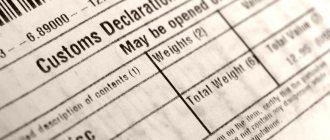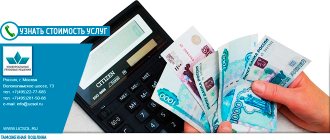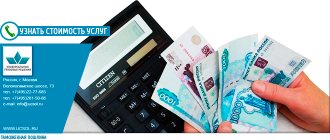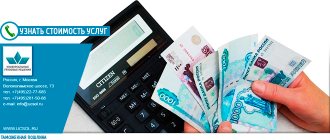Home — Articles
The rules for customs clearance of goods are determined by the Customs Code of the Russian Federation. Moreover, for the purposes of customs control, goods are understood as any movable property and vehicles moved across the border of the Russian Federation, except those used in international transport. Thus, the rules for customs clearance are the same regardless of whether, from the point of view of accounting classification, goods, materials or fixed assets are imported. Based on customs rules, all this is a commodity and is subject to declaration when moving across the border of the Russian Federation. Declaration. The list of documents and information that must be submitted for customs clearance of goods in accordance with the chosen customs regime is approved by Order of the Federal Customs Service of Russia dated April 25, 2007 N 536. When importing goods into the territory of the Russian Federation in the import regime, i.e. without the obligation to re-export, they are placed under the customs regime of “release for domestic consumption” (previously the term “release for free circulation” was used). It should be noted that the well-known term import is not used at all in the Customs Code of the Russian Federation. The release regime for domestic consumption provides for the registration of a cargo customs declaration (CCD). When importing goods, sets of declarations TD3 (for declaring information about one product) and TD4 (in addition to the set TD3 when declaring information about two or more goods) are used. The form of the cargo customs declaration was approved by the Order of the Federal Customs Service of Russia dated 08/03/2006, and the Instructions on the procedure for filling out were approved by Order of the Federal Customs Service of Russia dated 09/04/2007 N 1057. The customs authority will also need to present the import contract and the transaction passport issued for it (if the contract amount exceeds $5,000). USA). The rules for the import into the customs territory of the Russian Federation of products subject to mandatory confirmation of conformity are approved by Decree of the Government of the Russian Federation of 02/07/2008 N 53. Lists of such products must be approved by the Government of the Russian Federation on the basis of technical regulations. According to Art. 29 of the Federal Law of December 27, 2002 N 184-FZ “On Technical Regulation”, during customs clearance of such goods, a declaration or certificate of conformity or documents on their recognition are submitted simultaneously with the customs declaration (for foreign certificates recognized in accordance with international treaties of the Russian Federation).
Concept and purpose of customs duty
It is represented by a mandatory payment collected by customs officials in the process of transporting goods to other countries or to Russia from other states. It has several functions:
- support for Russian manufacturers of goods, which helps protect domestic companies from competition from foreign corporations;
- providing Russians with only high-quality and best imported goods;
- obtaining large profits directed to important state goals.
Foreign economic activity is regulated by tariff and non-tariff methods. In the first case, different fees are applied, levied on entrepreneurs during transactions. Non-tariff methods include the need to obtain licenses, issue quotas, and issue certificates for goods.
Almost all foreign trade transactions are subject to customs duties and other similar fees or taxes. Money received from entrepreneurs is sent to the state budget.
Attention! The amount of the duty may vary, as it depends on the transactions being made, which can be not only commercial, but also educational or charitable, and some companies are entitled to benefits and preferences or even exemption from paying the duty.
Along with the duty, entrepreneurs pay fees for customs clearance, VAT and excise taxes.
VAT on import of services
Receiving services from a foreign counterparty does not require documentation at the customs post. A legal entity or individual acting as a buyer is a tax agent and must withhold the amount of VAT from the supplier and transfer it to the federal budget.
The documentary basis for payment is a contract, in which it is necessary to state the condition that the amount of VAT is included in the total cost of the service provided. If there is no such clause in the contract, then the importer will be required to pay VAT in excess of the contract amount, at his own expense.
If the work and services performed by the foreign partner are subject to Art. 149 of the Tax Code of the Russian Federation and are not subject to VAT, the importer is relieved of the duties of a tax agent - he must neither calculate nor transfer tax to the budget. However, he retains the obligation to submit a VAT return with completed section 7 to the tax authority at the place of his registration.
Types of bets
Duty rates are expressed in monetary terms, either in domestic or foreign currencies. They are established in some relation to the customs price of goods transported across the border of the Russian Federation. When determining them, the provisions of the Federal Law “On Customs Tariffs” are taken into account. Tariffs are the same for all entrepreneurs, and therefore do not change under the influence of various factors, unless otherwise provided by law.
Attention! The Federal Assembly of the Russian Federation is engaged in setting maximum rates of import duties, for which trade and political relations with different countries are taken into account.
Eurasian Economic Commission
Article 75. Object of taxation for customs duties, taxes and the base (tax base) for calculating customs duties and taxes
1. The object of customs duties and taxes are goods transported across the customs border.
2. The basis for calculating customs duties depending on the type of goods and applied types of rates is the customs value of goods and (or) their physical characteristics in kind (quantity, weight, taking into account its primary packaging, which is inseparable from the goods before its consumption and in which the product is presented for retail sale, volume or other characteristics).
3. The tax base for calculating taxes is determined in accordance with the legislation of the member states of the Customs Union.
Article 76. Calculation of customs duties and taxes
1. Customs duties and taxes are calculated by payers of customs duties and taxes independently, except for cases provided for by this Code and (or) international treaties of the member states of the Customs Union.
2. When collecting customs duties and taxes, the calculation of the amounts of customs duties and taxes payable is carried out by the customs authority of the member state of the Customs Union in which customs duties and taxes are payable.
3. Calculation of the amounts of customs duties and taxes payable is carried out in the currency of the member state of the Customs Union, to whose customs authority the customs declaration was submitted, except for cases provided for by international treaties of the member states of the Customs Union.
4. The amount of customs duties subject to payment and (or) collection is determined by applying the base for calculating customs duties and the corresponding type of customs duty rate, unless otherwise established by this Code.
The amount of taxes subject to payment and (or) collection is determined in accordance with the legislation of the state - a member of the Customs Union, on the territory of which goods are placed under the customs procedure, or on the territory of which the fact of illegal movement of goods across the customs border is revealed, unless otherwise established by this article .
(paragraph as amended by the Protocol dated April 16, 2010)
5. In the case established by part two of paragraph 2 of Article 84 of this Code, the amounts of customs duties and taxes are subject to calculation in accordance with the legislation of the member state of the Customs Union in which they are subject to payment.
6. The total amount of import customs duties and taxes in relation to foreign goods cannot exceed the amount of customs duties and taxes payable if foreign goods were released for domestic consumption, without taking into account the benefits for paying customs duties specified in subparagraphs 2) and 3) paragraph 1 of Article 74 of this Code (hereinafter referred to as benefits for the payment of customs duties, taxes), penalties and interest, except for cases when the amount of customs duties and taxes increases due to changes in the rates of customs duties and taxes, when rates are applied to foreign goods customs duties and taxes in force on the day of acceptance of the customs declaration by the customs authority when declaring another customs procedure in relation to these foreign goods.
Article 77. Application of rates of customs duties and taxes
1. For the purposes of calculating customs duties and taxes, the rates in effect on the day of registration of the customs declaration by the customs authority are applied, unless otherwise provided by this Code and (or) international treaties of the member states of the Customs Union.
2. For the purposes of calculating import customs duties, the rates established by the Unified Customs Tariff of the Customs Union are applied, unless otherwise provided by this Code and (or) international treaties of the member states of the Customs Union.
For the purposes of calculating export customs duties, the rates established by the legislation of the member states of the Customs Union are applied in relation to goods included in the consolidated list of goods formed by the Commission of the Customs Union in accordance with international treaties of the member states of the Customs Union regulating the application of export customs duties in relation to third parties. countries
For the purpose of calculating taxes, the rates established by the legislation of the member state of the Customs Union are applied, on the territory of which goods are placed under the customs procedure or on the territory of which the fact of illegal movement of goods across the customs border is revealed, unless otherwise established by this paragraph.
For the purpose of calculating taxes, if it is established (confirmed) in the manner determined by the international treaty of the member states of the Customs Union that goods placed under the customs transit procedure are located on the territory of another member state of the Customs Union, the rates established by the legislation of this member states of the Customs Union.
Article 78. Conversion of foreign currency for the purposes of calculating customs duties and taxes
If, for the purposes of calculating customs duties and taxes, including for determining the customs value of goods, it is necessary to convert foreign currency into the currency of a member state of the Customs Union to the customs authority of which the customs declaration is submitted, the exchange rate established in accordance with the legislation is applied of this state - a member of the Customs Union and valid on the day of registration of the customs declaration by the customs authority, unless otherwise provided by this Code and (or) international treaties of the member states of the Customs Union.
Article 79. Payers of customs duties and taxes
Payers of customs duties and taxes are the declarant or other persons who, in accordance with this Code, international treaties of the member states of the Customs Union and (or) the legislation of the member states of the Customs Union, are obliged to pay customs duties and taxes.
Article 80. Origin and termination of the obligation to pay customs duties and taxes. Cases of non-payment of customs duties and taxes
1. The obligation to pay customs duties and taxes arises in accordance with Articles 81, 161, 166, 172, 197, 211, 214, 227, 228, 237, 250, 261, 274, 283, 290, 300, 306 and 360 of this Code.
2. The obligation to pay customs duties and taxes is terminated in the following cases:
1) payment or collection of customs duties and taxes in the amounts established by this Code;
2) placing goods under the customs procedure of release for domestic consumption with the provision of benefits for the payment of customs duties and taxes that are not associated with restrictions on the use and (or) disposal of these goods;
3) destruction (irretrievable loss) of foreign goods due to an accident or force majeure or as a result of natural loss under normal conditions of transportation (shipment) and (or) storage;
4) if the amount of the unpaid amount of customs duties and taxes does not exceed an amount equivalent to 5 (five) euros at the exchange rate established in accordance with the legislation of the member state of the Customs Union on the territory of which the obligation to pay customs duties and taxes arose at the time the occurrence of an obligation to pay customs duties and taxes;
(clause 4 as amended by the Protocol dated April 16, 2010)
5) placing goods under the customs procedure of refusal in favor of the state, if the obligation to pay customs duties and taxes arose before the registration of the customs declaration for placing goods under this customs procedure;
6) conversion of goods into the property of a member state of the Customs Union in accordance with the legislation of this member state of the Customs Union;
7) foreclosure on goods, including at the expense of the cost of goods, in accordance with the legislation of a member state of the Customs Union;
 refusal to release goods in accordance with the declared customs procedure, in relation to the obligation to pay customs duties and taxes that arose during the registration of a customs declaration for the placement of goods under this customs procedure;
refusal to release goods in accordance with the declared customs procedure, in relation to the obligation to pay customs duties and taxes that arose during the registration of a customs declaration for the placement of goods under this customs procedure;
9) if it is recognized as hopeless for collection and write-off in the manner determined by the legislation of the member states of the Customs Union;
10) the occurrence of circumstances with which this Code connects the termination of the obligation to pay customs duties and taxes.
3. Customs duties and taxes are not paid:
1) when placing goods under customs procedures that do not provide for such payment, subject to the conditions of the relevant customs procedure;
2) when importing goods, with the exception of goods for personal use, to one recipient from one sender under one transport (shipment) document, the total customs value of which does not exceed an amount equivalent to 200 (two hundred) euros at the exchange rate established in accordance with the legislation of the member state of the Customs Union, whose customs authority carries out the release of such goods, in force at the time the obligation to pay customs duties and taxes arises;
3) when moving goods for personal use in cases established by international treaties of the member states of the Customs Union;
4) if, in accordance with this Code, legislation and (or) international treaties of the member states of the Customs Union, goods are exempt from customs duties and taxes (not subject to customs duties and taxes) and subject to the conditions in connection with which such exemption is granted .
4. The obligation to pay customs duties and taxes arises and terminates when customs procedures are established in accordance with:
1) paragraph 2 of Article 202 of this Code - in accordance with international treaties of the member states of the Customs Union;
2) paragraph 3 of Article 202 of this Code - in accordance with the legislation of the member states of the Customs Union.
(clause 4 as amended by the Protocol dated April 16, 2010)
Article 81. Origin and termination of the obligation to pay customs duties and taxes and the timing of their payment in the event of illegal movement of goods across the customs border
1. The obligation to pay import customs duties and taxes for the illegal movement of goods across the customs border arises when goods are imported into the customs territory of the Customs Union.
The obligation to pay export customs duties for the illegal movement of goods across the customs border arises when goods of the Customs Union are exported from the customs territory.
2. The obligation to pay customs duties and taxes during the illegal movement of goods across the customs border arises jointly and severally with persons illegally moving goods, persons participating in illegal movement if they knew or should have known about the illegality of such movement, and when importing goods to the customs territory of the Customs Union - also from persons who acquired ownership or possession of illegally imported goods, if at the time of acquisition they knew or should have known about the illegality of import.
3. The obligation to pay customs duties and taxes during the illegal movement of goods across the customs border is terminated for the persons specified in paragraph 2 of this article in the cases established by paragraph 2 of Article 80 of this Code.
4. In case of illegal movement of goods across the customs border, except for the case specified in part two of this paragraph, the deadline for payment of customs duties and taxes is the day the goods cross the customs border, and if this day is not established, the day of detection of the fact of illegal movement of goods through the customs border border.
In case of illegal movement of goods across the customs border with false declaration, the deadline for payment of customs duties and taxes is considered to be the day of registration by the customs authority of the customs declaration submitted to place the goods under the customs procedure, with the exception of the customs procedure of customs transit.
(clause 4 as amended by the Protocol dated April 16, 2010)
5. In case of illegal movement of goods across the customs border, customs duties and taxes are subject to payment, except for the case specified in part two of this paragraph:
1) when importing goods into the customs territory - in amounts corresponding to the amounts of import customs duties and taxes that would be payable when such goods were placed under the customs procedure of release for domestic consumption, without taking into account tariff preferences and benefits for the payment of customs duties and taxes calculated based on the rates of customs duties, taxes and exchange rates established in accordance with the legislation of the member state of the Customs Union, whose customs authority collects customs duties, taxes, and those in force on the day the goods cross the customs border, and if this day is not established - on the day the fact of illegal movement of goods across the customs border is revealed;
2) when exporting goods of the Customs Union from the customs territory - in amounts corresponding to the amounts of export customs duties that would be payable when placing such goods under the customs export procedure, without taking into account tariff preferences and benefits for the payment of customs duties and taxes, calculated on the basis of rates customs duties and exchange rates established in accordance with the legislation of the member state of the Customs Union, the customs authority of which collects customs duties, taxes, and those in force on the day the goods cross the customs border, and if this day is not established, on the day the fact of illegal movement is revealed goods across the customs border.
In case of illegal movement of goods across the customs border with false declaration, customs duties and taxes are subject to payment in amounts corresponding to the amounts of customs duties and taxes that would be payable on the basis of reliable information when placing such goods under the declared customs procedure on the day of registration of the customs declaration by the customs authority , submitted to place goods under a customs procedure, with the exception of the customs procedure of customs transit. In this case, the amounts of customs duties and taxes actually paid during customs declaration are not paid (collected) again, and the amounts of customs duties and taxes that were overpaid (collected) are subject to refund in accordance with this Code.
(clause 5 as amended by the Protocol dated April 16, 2010)
6. Customs duties and taxes for the illegal movement of goods across the customs border are calculated in accordance with this chapter.
If determining the amounts of customs duties and taxes payable is impossible due to failure to provide the customs authority with accurate information about the nature of the goods, their name, quantity, country of origin and customs value, the amounts of customs duties and taxes are determined based on the highest rates of customs duties, taxes, and also the quantity and (or) value of goods that can be determined on the basis of available information.
When accurate information about the goods is subsequently established, the overpaid or overcharged amounts of customs duties and taxes are returned, or the unpaid amounts are recovered in accordance with Chapters 13 and 14 of this Code.
Ad valorem
This rate is calculated as a percentage of the customs price of goods on which duty is charged. For example, 12% of the customs value of transported items may be charged. The use of such rates increases customs duties with a steady increase in prices on the world market for imported goods. They are considered the most fair within the framework of competition, and are also ideal when importing finished products, machines, equipment or high-tech goods.
Attention! The undeniable advantage of using an ad valorem rate is maintaining uniform protection of the domestic market, so it is not affected by changes in prices on the world market for imported goods.
The difficulty of applying ad valorem duty lies in the difficulty of determining the customs value of items. To calculate the payment, the formula is used:
Customs value of goods * bid
Specific
This rate makes it easy to calculate the amount of duty, since a certain amount is charged for each item of goods. It is usually applied to exported goods represented by raw materials, but sometimes also to imports.
Attention! The number of specific rates is sharply reduced due to an increase in finished products exchanged between different countries.
The advantages of using them include ease of calculation, since you do not have to accurately find out the cost of goods. Therefore, they are usually used when there are difficulties in determining this indication, and there is also a suspicion that the seller is deliberately reducing the price for personal gain. Specific rates, compared to ad valorem rates, form a strict barrier to the import and export of goods, although they are uneven. Entrepreneurs treat them favorably when importing expensive goods. They are not suitable for cheap and low quality items.
To calculate the specific customs duty rate, a simple formula is used:
Payment amount = physical parameter of the goods * rate in foreign currency * exchange rate
Documents to confirm the right to deduct VAT
The initial documents allowing the importer to claim VAT deduction are:
- foreign trade contract with a foreign supplier;
- invoice for payment from the supplier (invoice);
- customs declaration - customs declaration (copy);
- bank statements, certified duplicates of payment orders.
All documents justifying the application for a VAT tax deduction when importing goods should be kept for at least four years.
Special types
There are several other rates that are charged by customs officers of countries that are members of the Customs Union.
Table 1. Classification.
| Type of bet | Peculiarities |
| Special | Designed to protect the country's domestic market from excessive amounts of imported goods. Therefore, a higher rate applies to certain groups. |
| Anti-dumping | It is used to bring the prices of imported goods to the level available in the country. But it is effective if its use does not cause any harm to domestic producers. |
| Compensatory | This duty is added to regular fees, which reduces the competitiveness of goods imported from other countries. Therefore, buyers prefer to purchase products created by domestic companies at reduced prices. |
| Seasonal | They are introduced for a maximum of 6 months and are also intended to regulate exported goods. An exact list of the goods themselves, as well as information about the applicable seasonal rate and duty payment rules, are approved by the Russian Government. They are usually used instead of ETT rates. |
Attention! Art. 79 of the Customs Code of the Customs Union contains information that customs duties help reduce the harm caused to the country’s domestic economy by imports.
Watch the video for everything on the topic:
The above duties are not a customs payment, therefore they are established only on the basis of a decision made by the EEC Board. If businessmen refuse to pay these duties, they are subject to administrative liability. But in practice, there are situations when companies win court proceedings because they have proven that there are no grounds for using anti-dumping measures.
Right to tax deduction for VAT
According to the generally established rule, taxpayers who have paid VAT at the customs post have the opportunity to declare a deduction in the declaration for the amount of tax paid. The provision of a deduction is guaranteed if the following criteria are met:
- imported goods will be used on Russian territory in transactions subject to VAT;
- imported products will be resold in the future;
- a tax deduction can be claimed by a Russian company only in the quarter when the goods are registered;
- receipt of imported goods is confirmed by an invoice, contract or customs declaration;
- payment of VAT is certified by primary documents received at customs.
If the importer is a business entity exempt from VAT or operating under a special regime, then the tax deduction is not applied. The VAT paid at customs will be taken into account in the nominal price of the goods upon receipt and subsequent sale.
Information about received imported goods/services is subject to entry into the purchase book indicating the amount of VAT. The prerequisite for registering the fact of purchase is payment of tax and an import statement certified by the tax authority.
Who is the payer?
Customs duties are paid by all entrepreneurs and firms that import or export goods. It is allowed to import and export goods without paying this fee if their value does not exceed 200 euros. But even in such a situation, businessmen are required to submit a declaration to the customs authority.
Citizens do not pay duty if items intended for personal use are transported.
Attention! You can transport up to 200 cigarettes, 3 liters of alcohol, 59 cigars and 250 grams of tobacco without charging a duty.
Calculation rules
For calculation, a rate is chosen wisely, depending on the economic situation in the country. Therefore, you have to rely on documents approved by the Ministry of Finance of the Russian Federation. The documentation provides the basic tariff and various preferences that some taxpayers can take advantage of.
For correct calculation you need to have the following data:
- code of the imported or exported goods;
- the base rate established for each type of product;
- the country in which the goods were manufactured;
- customs value;
- number of product units;
- the ability to use any reduction factors;
- current exchange rate.
Attention! In the calculation process, the country of origin must be taken into account, since agreements have been concluded with some states allowing taxpayers to enjoy benefits and concessions.
Offered preferences
Entrepreneurs importing goods from countries with which the Russian Federation has concluded an agreement on the formation of a free trade zone are exempt from paying customs duties. Additionally, other contracts may be signed that allow rates to be reduced or changed.
Benefits are offered in several types:
- complete exemption from duty;
- rate reduction;
- refund of previously paid fees;
- provision of a quota.
Benefits are offered based on several reasons, which include the country of origin of the cargo, the established customs regime with another state, the price and type of goods.
News about customs duties on video:
What does import tax consist of?
Keep records of exports and imports using the simplified tax system in the Kontur.Accounting web service. Currency accounting and work instructions, taxes, automatic salary calculation and reporting in one service Get free access for 14 days
The Customs Code of the Customs Union in Article 70 lists the necessary taxes and fees. These include:
- Duty on import of goods.
- Value added tax.
- Excise tax
- Customs duty.
Depending on the type of goods, the status of the importer and other conditions specified in the legislation, it depends on what taxes and fees will have to be paid and in what amount.
Fees for individuals
Citizens have the right to bring various goods to Russia that are used exclusively for personal use. They are not declared, but their price should not exceed 10 thousand euros when transported by air or 1.5 thousand euros when imported by car. The total weight of the cargo must not exceed 50 kg.
If the established standards are exceeded, the individual draws up a declaration in which all imported items are registered. For exceeding the quota, a fee is calculated and paid.
Car duties
If a car is imported from another country, the duty is calculated based on various characteristics:
- taxpayer status, which can be a citizen or a company;
- purpose of importing the car;
- car cost;
- car type;
- power and other engine characteristics.
The duty rate does not depend on the country in which the car was produced. Payments can be made not only in rubles, but also in foreign currency. If a citizen imports a car into Russia for personal use, then he can complete this process maximum once a year.
Attention! The customs clearance procedure is carried out for all vehicles, regardless of the method of transportation.
Bids on other products
In 2021, rates depend on the quantity and price of goods. For example, for mops, combs, brushes and nail files, an ad valorem rate of 20% of the customs price is established. Other examples include:
- furniture and mattresses – 20%, but not less than 1 euro per 1 kg;
- lighting equipment – 5%;
- weapons and ammunition, swords and pikes – 20%;
- cables and filters, rakes, scissors and cattle, as well as tomatoes and cucumbers – 15%;
- photographic equipment – 15% of the price;
- citruses, nuts, potatoes, animals – 5%.
These indicators change regularly, so entrepreneurs must monitor the adjustments to correctly calculate the duty.
Accounting and tax accounting
Payment of customs duties in accounting is reflected by the following entries:
- inclusion of duties in the price of goods and raw materials – Dt 10 (Dt 41) Kt 76;
- payment of duties and other fees – Dt 76 Kt 51.
Costs associated with the purchase of raw materials and transportation across the Russian border are included in material costs, as indicated in Art. 254 NK.
Customs duties are paid by entrepreneurs who transport goods and raw materials across the Russian border. They are calculated based on different rates, taking into account the number of goods and their customs value. The fee is paid within 15 days after submitting the declaration.
Top
Write your question in the form below
Methods for determining the customs value of goods
There are six methods for determining customs value: 1) based on the transaction price of imported goods; 2) at the price of a transaction with identical goods; 3) at the price of a transaction with similar goods; 4) subtracting the cost; 5) adding value; 6) backup method. These methods must be applied sequentially: if the first cannot be used, the second is used, and so on. Let's look at each of the methods in more detail. The method for determining the customs value based on the price of a transaction with imported goods provides that the customs value is taken equal to the price of the transaction with a foreign supplier (actually paid or payable), to which must be additionally added: - expenses incurred by the buyer, but not included in the price of the goods: for the payment of remuneration to the agent (intermediary), with the exception of remunerations paid by the buyer to his agent (intermediary) for the provision of services related to the purchase of goods; for packaging, if for customs purposes it is considered as a single whole with goods; for packaging, including the cost of packaging materials and packaging work; — the appropriately distributed cost of the following goods and services, directly or indirectly provided to the buyer free of charge or at a reduced price for use in connection with the production and sale for export in the Russian Federation of the goods being valued, in an amount not included in their price: raw materials, materials and components , which are an integral part of imported goods; tools, dies, molds and other similar items used in the production of imported goods; materials used in the production of imported goods; design, development, engineering, design work, design, decoration, drawings and sketches produced (performed) in any country, with the exception of the Russian Federation, and necessary for the production of the goods being valued; - payments for the use of intellectual property (with the exception of payments for the right of reproduction in the Russian Federation), which relate to the goods being valued and which the buyer must directly or indirectly pay as a condition of the sale of such goods, in an amount not included in the price, provided that that such payments apply only to imported goods; - any part of the income received as a result of the subsequent sale, other disposal or use of goods, which is directly or indirectly due to the seller; — costs of transportation (transportation) of goods to the airport, seaport or other place of arrival of goods to the customs territory of the Russian Federation; — expenses for loading, unloading or transhipment of goods and carrying out other operations related to their transportation (transportation) to the airport, seaport or other place of arrival of goods into the customs territory of the Russian Federation; — insurance costs in connection with the international transportation of goods. From 07/01/2006, these additional charges to the price can only be made on the basis of documented and quantifiable information using the buyer’s accounting data. In the absence of such information, the method based on the transaction value of imported goods cannot be applied. The conditions for the non-application of this method are also analyzed in Resolution of the Plenum of the Supreme Arbitration Court of the Russian Federation dated July 26, 2005 N 29. Determination of customs value based on the transaction price of identical goods . In this case, identical goods are understood to be the same in all respects with the goods being valued, including such characteristics as physical characteristics, quality and reputation in the market, country of origin and manufacturer. The transaction price for identical goods is accepted as the basis for determining the customs value if these goods: - were sold for import into the territory of the Russian Federation; - imported simultaneously with the goods being valued or no earlier than 90 days before the import of the goods being valued; — imported in approximately the same quantities and (or) under the same commercial conditions. If identical goods were imported in a different quantity or under different conditions, it is necessary to make an appropriate adjustment to their price and document its validity. If more than one transaction price for identical goods is identified, the lowest of them is used to determine the customs value. The customs value determined by the transaction price of identical goods must be adjusted to take into account the additional costs listed in the previous method. The method of determining customs value based on the transaction price of homogeneous goods considers as homogeneous goods that, although not identical in all respects, have similar characteristics and consist of similar components, which allows them to perform the same functions as the goods being valued, and be commercially interchangeable. When determining the homogeneity of goods, their characteristics such as quality, presence of a trademark and reputation in the market, country of origin and manufacturer are taken into account. When using customs valuation methods based on prices of identical and similar goods: - goods are not considered identical to or similar to those being valued if they were not produced in the same country as the goods being valued; - goods produced not by the manufacturer of the goods being valued, but by another person, are taken into account only if the manufacturer produces neither identical nor homogeneous goods being valued; - goods are not considered identical or homogeneous if their design, development work on them, their decoration, design, sketches and drawings and other similar work were performed in the Russian Federation. Determination of customs value using the valuation method based on subtraction of value is carried out if the valued, identical or homogeneous goods will be sold on the territory of the Russian Federation without changing their original condition. In this case, as the basis for determining the customs value of goods, the price of a unit of goods is taken at which such goods are sold in the largest consignment on the territory of the Russian Federation no later than 90 days from the date of import of the goods being valued to a participant in the transaction who is not an interdependent party with the seller. The following are deducted from the price of a unit of goods: - expenses for the payment of commissions, ordinary profit allowances and general expenses in connection with the sale of imported goods of the same class and type in the Russian Federation; - the amount of import customs duties, taxes, fees and other payments payable in the Russian Federation in connection with the import or sale of goods; - ordinary expenses incurred in the Russian Federation for transportation, insurance, loading and unloading. When using the valuation method based on the addition of costs, the price of the goods calculated by adding together is accepted as the basis for determining the customs value of the goods: - the cost of materials and costs incurred by the manufacturer in connection with the production of the goods being valued; - general costs typical for the sale in the Russian Federation from the country of export of goods of the same type, including costs of transportation, loading and unloading, insurance to the point of crossing the customs border of Russia, and other costs; - profit usually received by the exporter as a result of the supply of such goods to the Russian Federation. The backup method is as follows. If the customs value of the goods cannot be determined by the declarant as a result of the consistent application of all previous methods, or if the customs authority reasonably believes that these methods cannot be used, the customs value of the goods being valued is determined taking into account world practice. When applying the reserve method, the customs authority provides the declarant with the price information at its disposal. The following cannot be used as a basis for determining the customs value of goods using the reserve method: - the price of goods on the domestic Russian market; - the price of goods supplied from the country of export to third countries; — price on the domestic market of the Russian Federation for goods of Russian origin; — an arbitrarily set or reliably unconfirmed price of a product. That is, under the conditions of applying the reserve method, customs authorities can set the customs value based on their ideas about the price of the imported goods. The amounts of customs duties and fees will be taken into account for tax purposes as other expenses associated with production and sales. It should be borne in mind that when determining the customs value by any of these methods, it includes only those delivery-related costs that are incurred before the goods cross the customs border of the Russian Federation. However, some Incoterms delivery bases provide for the inclusion in the contract price of expenses to the destination, which may be located on the territory of the Russian Federation at a considerable distance from the border. In this case, the importer has the right, when determining the customs value, to reduce the contract price by the cost of delivery within Russia.











